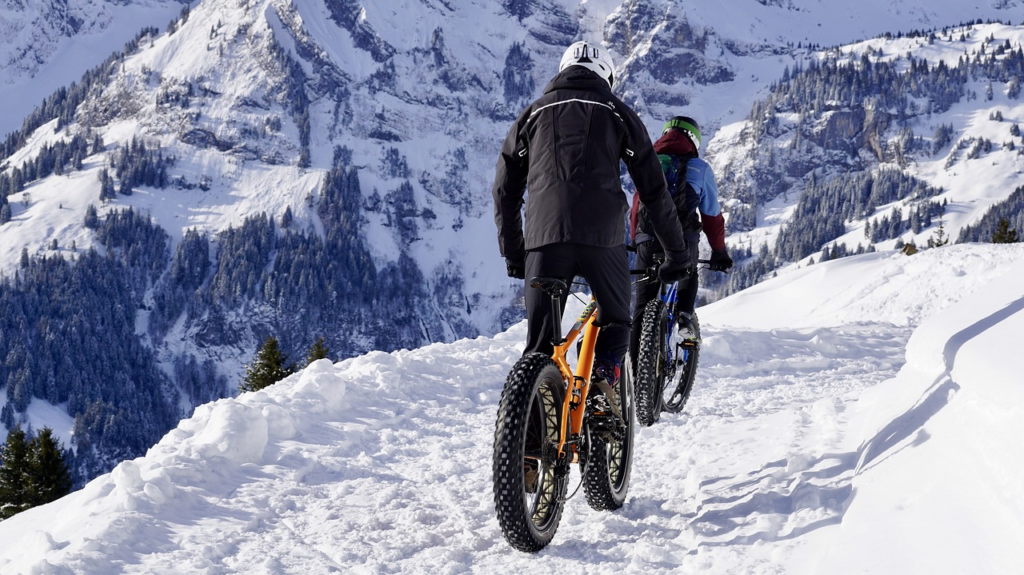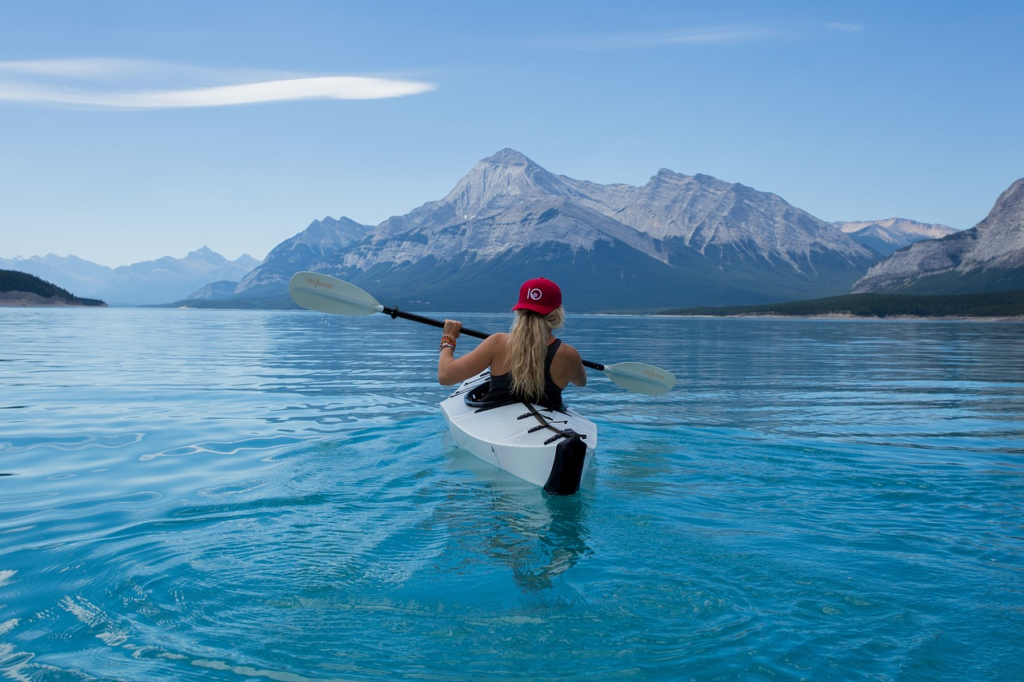Winter adventures are exhilarating, whether you’re you’re heading to snowy mountain peaks, ice-capped villages, or winter sports destinations. However, venturing into cold environments requires careful preparation, especially when packing. The right gear can make or break your trip, and it’s essential to strike a balance between staying warm, being comfortable, and keeping your pack manageable.

To help you enjoy the thrill of your winter adventure without the stress of unpreparedness, we’ve created the ultimate packing guide. This guide will ensure you’re well-equipped for cold temperatures and snow and all the winter activities you plan to enjoy.
Clothing layers: the key to warmth
When it comes to staying warm, layering is the most essential principle. You’ll want to wear moisture-wicking fabrics close to your skin, followed by insulating layers to trap warmth and finish with a waterproof or windproof outer layer to protect against the elements.
Base Layer: Start with a moisture-wicking base layer. Avoid cotton, as it traps moisture and makes you feel cold. Instead, opt for merino wool or synthetic fabrics such as polyester or nylon, which wick away sweat and dry quickly. A long-sleeve top and thermal leggings are the essentials.
Mid layer:
This layer is designed for insulation. Fleece jackets, down sweaters, or synthetic-filled options work best. These materials trap heat, keeping you warm even if you’re standing still in the snow. Consider a lightweight puffer jacket or a fleece pullover for optimal warmth without bulk.
Outer Layer: Your outer layer should shield you from wind, rain, and snow. Waterproof, windproof jackets and pants are a must. Look for garments made with materials like Gore-Tex or other high-performance fabrics to ensure maximum protection and breathability. Make sure your jacket has a hood for extra protection against icy winds.
Bottoms:
For pants, thermal leggings or base layers paired with waterproof, insulated pants are the best option. Depending on your activities, you may also want to pack snow pants if you’re skiing, snowboarding, or engaging in other snow-heavy activities.
Winter Accessories for Maximum Comfort
Hats and gloves:
A warm hat is crucial to keeping heat from escaping your head. Look for insulated beanies made from wool or fleece that will keep you warm even on windy days. Consider bringing a couple of options: one for warmth and another lighter one for activities that require more ventilation.
Gloves are essential for keeping your hands warm, but depending on your adventure, you may need to adjust the type. For general travel, insulated gloves or mittens with a waterproof exterior are ideal. If you’re skiing or snowboarding, consider specialized gloves or mittens that offer dexterity and warmth while keeping your hands dry. Be sure to bring glove liners as well for added warmth on frigid days.
Scarves and neck gaiters:
A scarf or neck gaiter will keep the wind off your neck and face. These accessories also serve as protection against frostbite in extreme conditions. Merino wool or fleece neck gaiters can double as face coverings, which is especially useful when you’re exposed to icy winds or during outdoor activities like skiing or snowshoeing.
Socks and footwear:
Winter socks are vital—opt for wool socks that provide insulation even when wet. Bring at least three pairs: one to wear, one for backup, and one to dry out. Avoid cotton socks, as they retain moisture and can lead to cold feet.
When it comes to boots, choose a pair that’s insulated, waterproof, and designed for the activity you plan to do. Insulated hiking boots or snow boots are great for walking, while ski or snowboarding boots are specialized for their respective activities. Remember to bring boot liners or gaiters to keep your feet dry and warm, especially in deep snow or wet conditions.
Gear for outdoor activities
Winter Sports Gear: If your adventure includes skiing, snowboarding, or ice skating, be sure to pack the necessary equipment. Many resorts offer rentals, but you may prefer to bring your gear for comfort and familiarity. This includes skis or snowboards, ski poles, boots, helmets, and goggles.

For cross-country skiing, snowshoeing, or winter hiking, pack sturdy, warm boots and gaiters. Gaiters keep snow from entering your shoes and provide an extra layer of insulation. A pair of sunglasses with UV protection is also a must to protect your eyes from the sun’s reflection off the snow, which can be blinding on bright days.
Backpack and hydration:
A small, weather-resistant backpack will serve you well for day hikes, skiing, or other excursions. Look for a pack with straps for carrying snowshoes or skis and one with enough room to bring extra layers, snacks, and water.
Remember, staying hydrated is just as important in winter as in summer. Though you may not feel thirsty in the cold, your body still loses water through exertion and breathing in dry air. Carry a thermos or water bottle with an insulated cover to prevent it from freezing. Some backpacks also feature hydration reservoirs, which are great for quickly sipping water on the go.
Health and Safety Essentials
Sunscreen and lip balm:
It may seem counterintuitive, but sunscreen is just as necessary in winter as in summer. Snow can reflect up to 80% of the sun’s UV rays, increasing your sunburn risk, especially at higher altitudes. Choose a high-SPF sunscreen and apply it liberally to exposed skin you can also use CBD Bath Bombs, including your face and ears.
Chapped lips are another common issue in the cold. Pack a high-quality lip balm with SPF to protect and hydrate your lips.
First aid kit:
Accidents can happen in harsh environments, so pack a small first aid kit with bandages, antiseptic wipes, pain relievers, and any personal medications you might need. If you’re engaging in winter sports, it’s wise to include items like blister pads, muscle rubs, and a thermal blanket.
Tech and Gadgets
Camera and power bank:
Winter landscapes are beautiful, and you’ll want to capture every moment. Bring a good camera or smartphone with a sturdy case (in case of accidental drops in the snow). Since cold weather can drain your battery quickly, bring a portable power bank to keep your devices charged on the go.
Headlamp or flashlight:
The days are shorter in winter, so having a reliable headlamp or flashlight is essential, especially if you’re venturing into the wilderness. Choose one that’s water-resistant and has adjustable brightness for different conditions.
Additional packing tips
Pack for the unexpected:
Weather conditions in winter can change quickly. Always pack extra layers, socks, and gloves in case you get wet or need additional warmth. Be prepared for longer-than-expected days, and ensure your gear includes emergency items like a multi-tool, matches, and a whistle.
Choose High-Quality, Multi-Use Items: Winter packing can be tricky, especially when trying to minimize space. Choose versatile clothing and gear that can serve multiple purposes. For example, a jacket with removable insulation or pants with zippers that can convert into shorts may help you adapt to varying temperatures. A multi-purpose tool like a Swiss army knife can save space and weight.
Conclusion
A winter adventure can be one of the most memorable experiences of your life, but being prepared is essential to ensuring your safety and comfort. By layering your clothing, packing the right gear for outdoor activities, and having health and safety essentials, you can focus on enjoying the breathtaking beauty of winter without worrying about the cold.
Every trip is different, so tailor this packing guide to fit your specific plans. Whether you’re you’re skiing, snowshoeing, or simply enjoying a winter retreat, a little preparation goes a long way in making your adventure as enjoyable as possible. So, pack smart, stay warm, and embrace the winter magic ahead!
